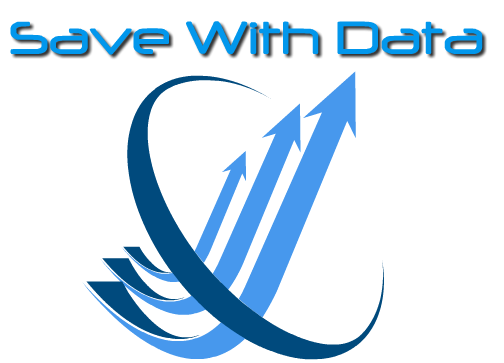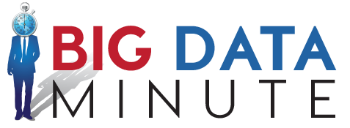
by Stephanie Rabinowotz | Sep 11, 2015 | Business Intelligence
The scariest thing about change is that many people don’t know they need it. The only way to better yourself or your business is to change! What does change have to do with saving money? If you are asking that question you probably need some sort of change. The questions you should be asking are,
- How can I change my company?
- Who can help me see the changes I need to make?
- Where should I start?
The answer is simple! Cliintel is a business consulting company that works with larger corporations to explain their data and make their production more efficient. In their new booklet, Big Data Tips 1-2-3, Cliintel explains how business optimization through utilizing data can not only save you money, but make a lot of it. Learn how to take your company to the next level by ensuring returning customers and a quality product.

by Tara Buck | Aug 7, 2015 | Business Intelligence, Business Optimization
It’s no secret that the amount of data government agencies must store is increasing at a rapid rate- and this growth shows no signs of slowing. But government agencies can’t just build more data centers to house this data – there must be a more efficient and cost-effective solution. In this Q&A, Melanie Stevens, Director, State and Local Government and Education, discusses why all-flash is an important next step in the storage evolution for government agencies.
Q: What is all-flash and why is it important for government agencies to consider? Melanie Stevens: Many government agencies are facing a storage dilemma in their data centers. Their need for storage is growing, but there is insufficient funding to purchase new equipment and limited budget for IT staff, space, power and cooling. Across the data center, we see increasing speed and lower cost in many networking devices, such as servers and switches. However, storage has failed to keep up because of the way mechanical disk works. Capacity and cost have grown, but performance has stayed flat. Because of this, the performance per gigabyte of disk is getting slower. Flash memory is faster, has more space and is much more power efficient than disk. The Pure Storage all-flash storage array meets the availability, reliability and scalability requirements of government agencies. It reduces flash storage to a price point that makes it cost effective for distributed deployments. Our all-flash storage array is cost competitive and more efficient to administer than disk, so it’s a logical next step for government data centers.
Q: What are some of the major challenges all-flash can help government agencies overcome? Melanie Stevens: In the past decade, we’ve seen the widespread adoption of virtualization in the data center. This has had an amazing impact on the efficiency of how state agencies do business. Server consolidation now supports ratios around 20-to-1 per physical server, and that number climbs with every new release of a processor. For government agencies, this means being able to do more with less, and faster. At the same time, virtualization creates its own challenges for storage. Virtualization is only as efficient as the storage on which it runs, and it requires more resources than the pre-virtualization era. This issue is compounded by applications such as virtual desktop infrastructure (VDI), which is commonly used to support kiosks, mobile workforces and online services offered by state agencies. While government agencies have realized ROI from server consolidation, they have to turn around and spend those savings on additional storage. As end users continue to virtualize more applications, disk arrays will only get more expensive and put government agencies further behind in the budget battle. Pure Storage provides the technology that allows government to maximize the benefits of virtualization, without inflated storage costs. So, whether the application is to manage database requirements, virtual desktop or server infrastructure, our all-flashstorage array allows for maximum performance without the usual backend cost.

by Bill Decker | Jul 7, 2015 | Business Intelligence, Measuring Results
Since Robert Kaplan and David Norton popularized the “balanced scorecard” approach to managing business performance in 1996, senior executives have eagerly embraced its prescription for measurable objectives and key performance indicators as the answer to all business problems. At the top of the pyramid, enlightened corporate leaders understand the need for strategic direction and solid KPIs that demonstrate progress toward strategic goals,
facilitated by comprehensive business intelligence. But too often, the connection isn’t made between “big picture” strategy and the activities of front-line employees further down the pyramid.
Today, corporate leaders live by robust sets of metrics that track their contributions to profitability, customer satisfaction, and employee retention. Their employees likewise focus on their individual numbers for sales, customer response time, and professional development. Unfortunately, because they may not really understand the relationship between their daily performance and their company’s strategic direction, much can get lost in translation. Widely disseminated business intelligence can be the missing link.
Strategy vs. Metrics
In a cable company call center, for example, customer care agents pay close attention to statistics like time spent with each customer and the abandon rate for incoming calls. These metrics are factors in a company-wide strategic pursuit of happier, more loyal customers. But without business intelligence that illustrates the relationship between customer loyalty strategy and call center metrics, progress can stall. Even the most conscientious employee may rush a customer call to meet a time target, ultimately damaging the relationship that is the core of business success. Business intelligence helps all employees see both the forest and the trees.
Your Business Intelligence Advisor/Knowledge Broker
For many companies, the most effective way to bridge the divide between the top and bottom of the organization chart is with assistance from an independent business intelligence advisor skilled in communicating with people at all professional levels. An objective consultant can bring a fresh set of eyes to longstanding issues, acting as a knowledge broker between the executive suite and employees in the field. The resulting business intelligence tools will give everybody the information they need to improve. Look for an advisor who understands business performance and the technical tools available to resolve issues, and who is experienced in breaking down organizational barriers of culture, resources and education.
Share the Wealth: Business Intelligence for All
Limiting your view of business intelligence to performance measurement will limit its impact. Executives are often nervous about distributing corporate-level data such as risk management and financial reports too broadly. While there may be legitimate reasons for such concerns, they should be weighed against the value of building the most well-informed workforce possible. An organization’s leaders know what happened and when, but the people with first-hand knowledge of why it happened are usually in field offices. Making your organization’s business intelligence widely available at all levels lets the C-suite learn from the field and vice versa. Isolating information limits your company’s ability to get smarter.
To learn more about business intelligence software, please visit www.cliintel.com or e-mail askcliintel@cliintel.com.

by Bill Decker | Jun 5, 2015 | Business Intelligence, Measuring Results
How dirty is your data? As business intelligence experts know, the answer to that question can have a tremendous impact on your organization’s efficiency. And although it may sound unsavory, the truth is that unreliable information, aka dirty data, is a common business intelligence problem for large companies.
Dirty data becomes a problem as businesses grow over time. As stores, offices, warehouses, and plants are established and enhanced, data systems multiply. Lack of standardization among these systems may allow users to produce inconsistent, invalid, or duplicated information, or simply fail to enter critical information.
While it may not have been a practical or intentional choice, lack of standardization allows for the adoption of different business rules and data systems across the company. Sites may use different sets of codes to represent similar products, services, or entities such as vendors, customers or lines of business. Data systems in use at some locations may collect information from users into free-form entry fields instead of using a “pick list” of options, increasing the likelihood of incorrect entries or multiple versions of a single value resulting from misspelling and typos. Furthermore, these systems may allow certain values such as names, addresses, or dates to be unexpectedly overwritten, limiting the ability to track historical events or create accurate business intelligence trend reporting.
When dirty data finds its way into reports, the results can be inaccurate and unusable, with important information distorted, excluded, or even multiplied many times over. When this happens, the hunt for meaningful, actionable business intelligence can become a laborious, never-ending quest.
Companies may not be aware of the full extent of their business intelligence problems, or may accept them as an unfortunate fact of life. Even if you know where the problems lie, you may have to follow elaborate and repetitive procedures to gather the business intelligence you need to succeed. Dirty data makes it difficult to consolidate and measure business results. Inaccurate and missing information prevents decision-makers from getting answers to their important questions about your business.
To evaluate the health of your data, consider the following business intelligence questions:
- Do you find yourself doing the same repetitive tasks each month to compile clean data?
- Is it difficult to answer questions about your business using your data?
- Do you regularly follow extensive procedures to retrieve and consolidate companywide data?
- Do you spend too much time analyzing your business and not enough on decisions that will move the company forward?
If your best analysts are spending the majority of their time compiling the data required to create reports, and the results always arrive at the last minute or past deadlines, it’s time to look into the role of business intelligence in your organization. Tackle the problem head-on with an experienced business intelligence expert who can identify and address dirty data issues, homogenize data across different systems and standards, and consolidate company-wide data so it is accessible and reportable whenever you need it. You’ll be on your way to creating a more strategic and action-oriented environment where those over-worked analysts can focus their efforts on analyzing results instead of preparing them.
To begin the process of addressing data quality, your business intelligence partner will need to understand your organization’s goals. Where do you want to be in five years? What has been keeping you awake at night? Identifying strategic priorities will help you outline a plan which focuses on the most relevant and critical information.
To establish high-quality, reliable data, the business intelligence team will filter, merge, standardize, and validate records, all with the end goal of simplifying life for the end user. But creating a great business intelligence solution involves much more than database management and coding. The process will likely involve identifying areas where company standards and business rules can be added or improved, and getting consensus from stakeholders to define the rules that will prevent future problems.
Working with the right business intelligence partner, you’ll ultimately find the treasure that every large business dreams of: a centralized, authoritative source of data, married to a business intelligence system that analyzes your business to pinpoint critical problems and highlight favorable opportunities, and then reports the results you need to measure progress and plan for the future.
Business Intelligence, Operational Efficiency and Dirty Data
by Paul Ousterhout, Business Support Expert
To learn more about business intelligence, visit www.cliintel.com or e-mail askcliintel@cliintel.com

by Richard Batenburg | May 16, 2015 | Creating Competitive Advantage
In the never-ending pursuit of productivity, process automation is often an appealing solution for a business department or company division seeking greater efficiency and lower expenses. The ideal approach to the problem is often software that addresses the user’s unique issues, ensuring better fit, smoother deployment and easier adoption. But paradoxically, organizations in greatest need of such a solution may not have the budget for the process automation tools that will make the biggest impact, or have a culture that embraces change.
A smart process automation consultant can help you spread the cost, share the benefits, and become a company hero by extending the use of your department’s software to other user groups. After all, the same process automation tools can most likely support a variety of related processes.
Tools used to route and dispatch the service workforce can also be used for a sales force, often with just a minor tweak. For example, consider the large telecommunications company whose non-pay disconnect group needed help. This team cut off service at the utility pole for customers whose accounts were in arrears. They operated apart from normal field operations functions as well as the field audit group, which detected illegal connections and theft of service. But on examination, a savvy process automation consultant determined that the procedures followed by these three departments had a great deal in common, and that they both shared key elements with activities of the “feet on the street” sales team.
The new process automation tool designed for the field service department worked very well for the disconnect team and the field audit folks. Joining with the sales team, all three groups became a powerful part of the company’s sales force and drove out the cost of redundant systems. Instead of simply cutting off service at the utility pole for non-paying customers, the team began calling on these customers to offer them the opportunity to settle accounts and keep their service. The tap audit team likewise turned service thieves into honest, paying customers. Service technicians earned sales commissions, the CFO was ecstatic, and the department head who initiated the process automation received kudos from all quarters.
Although distinct from process automation, business intelligence software offers another attractive opportunity to spread the wealth – and costs – among multiple departments. This takes very little salesmanship, as staff members notice that their colleagues in the newly BI-empowered department suddenly have valuable data, and are no longer griping about reports that are out of date on delivery. The interest generated by water-cooler chat can easily lead to BI tools that benefit the entire organization.
Sharing process automation tools among work groups inevitably yields another valuable benefit: as information is shared, communication grows between user groups. As a result, departmental silos that may have developed over time begin to dissolve, leading to a more integrated, mission-focused organization.
An experienced process automation advisor can help you uncover opportunities within your organization to extend custom software applications. It’s just a matter of adopting a broad perspective, rallying support for a change to intercompany corporative processes and then preparing for applause.
To learn more about maximizing process automation, please visit www.cliintel.com or e-mail askcliintel@cliintel.com.











Recent Comments